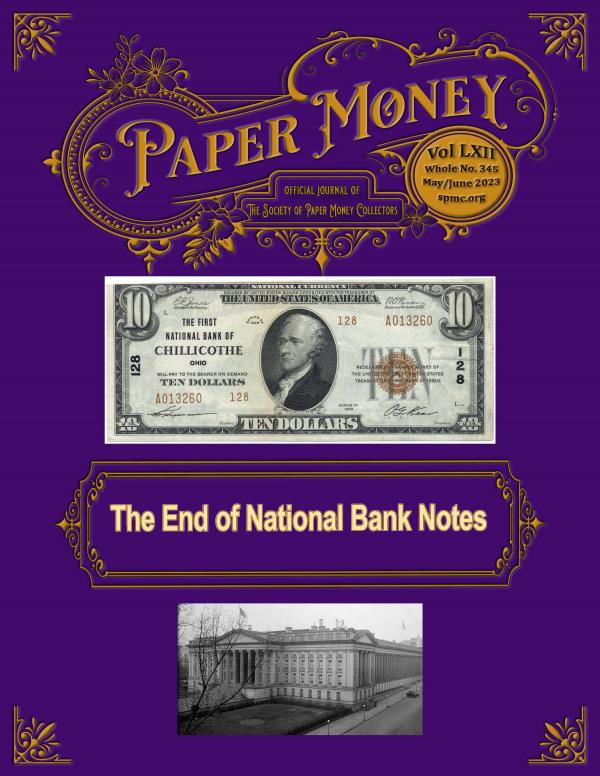Please sign up as a member or login to view and search this journal.

Table of Contents
The End of National Bank Notes--Lee Lofthus
Digital Archives of the Walton Collection--Matt Hansen
Back Plate 470 Discovery--Peter Huntoon
Laws Governing the Circulation & Denominations of NBNs--Peter Huntoon
William Morris Meredith--Rick Melamed
Challis Idaho Territory Postal Note--Bob Laub
Fairbanks, AK Bankers--Frank Clark
SPMC On-Line Showcase of NBN Collections--Matt Hansen
UNESCO World Heritage Sites--Albania--Roland Rollins
The Exchange Note (Billete de Canje) of Puerto Rico--Angel Zayas
Notes of the Farmers & Mechanics Bank--Gerald Dzara


